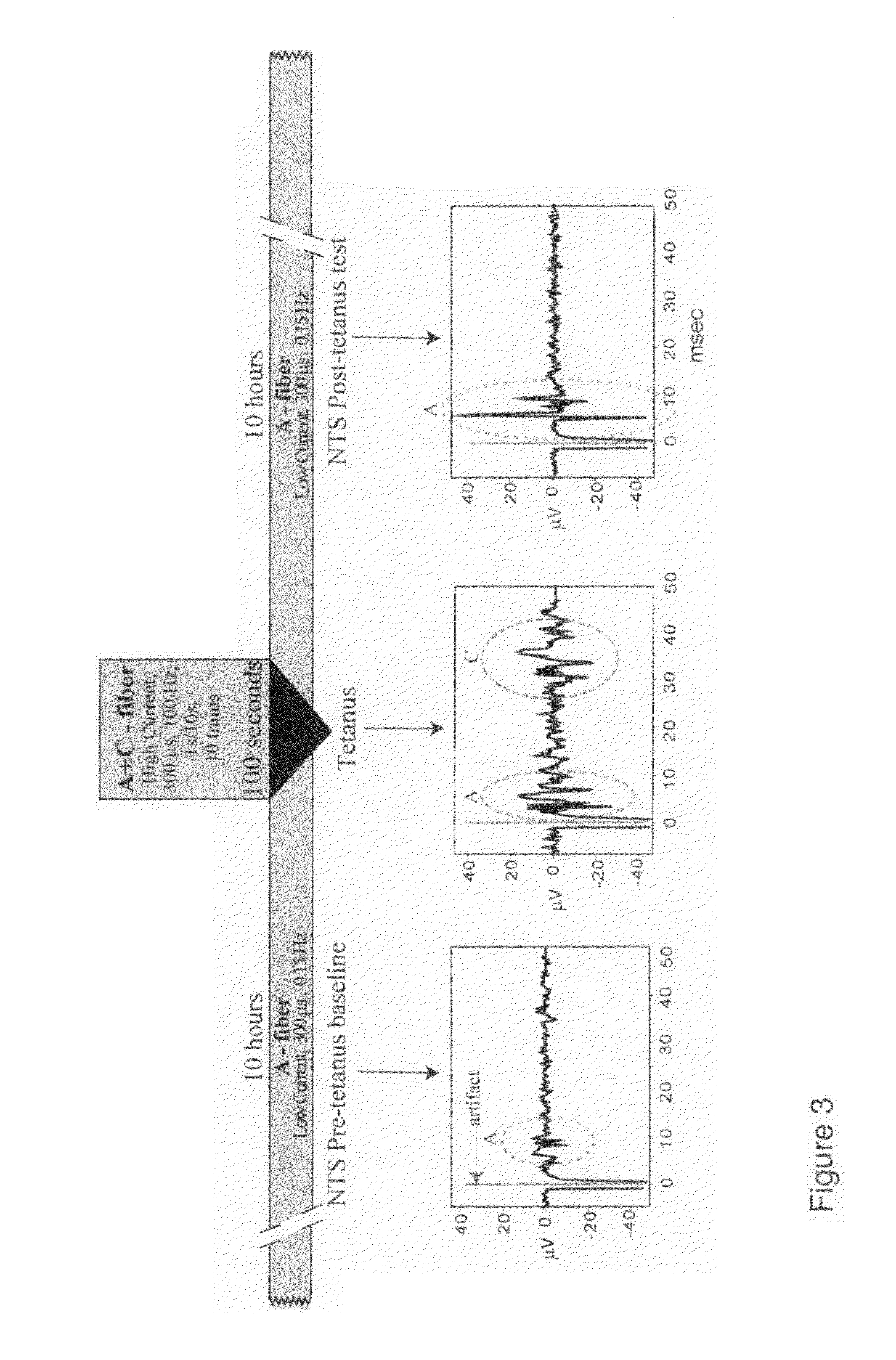Homotopic conditioning of the brain stem baroreflex of a subject
a brain stem and homotopic technology, applied in electrotherapy, therapy, etc., can solve the problems of inability to achieve clinically practicable efforts, inability to achieve baroreflex stimulation, and inability to achieve a wide range so as to reduce the variability of blood pressure in subjects. , the effect of reducing the variability of blood pressur
- Summary
- Abstract
- Description
- Claims
- Application Information
AI Technical Summary
Benefits of technology
Problems solved by technology
Method used
Image
Examples
example 1
[0087]An exemplary procedure for increasing the effectiveness of blood pressure regulation and thus, controlling hypertension is described in this example.
[0088]A brief tetanic baroreceptor electrical stimulation (pulse parameters: High Current, 300 μs, 100 Hz; 1 s / 10 s, 10 trains) produces a long-term, 10-15 hours, blood pressure depression in one embodiment.
[0089]The following are included in an exemplary embodiment of an inventive method:
[0090]Step 1: Stimulate low threshold A-fibers of baroreceptors, with pulse trains (15-60 Hz; 100 μs; 10 s) of low current intensity (5-25 μA); and measure the evoked blood pressure (EBP) responses to each stimulus. Ensemble average at least 10 stimulations.
[0091]Step 2: Apply a tetanic electrical stimulus (>50 μA, 300 μs, 100 Hz; 1 s / 10 s, 10 trains) to the same nerve paths to activate high threshold C-fibers, and thus to induce the LTP, also termed sensitization herein, increasing the gain of the baroreflex afferent path.
[0092]Step 3: Repeat St...
example 2
[0094]Methods according to embodiments of the present invention are exemplified by studies using stimulation of the aortic depressor nerve, in a special chronic rat preparation. A short, 10 second tetanus, over a 100 second period, tetanic (high-frequency) stimulation increases the sensitivity of the baroreceptor fibers, and the heightened sensitivity of the aortic baroreceptor input to the NTS persists for 10-15 hours.
[0095]Experiments are conducted using adult Sprague-Dawley female rats, weighing
[0096]Rats, 225-275 g, are neuromuscular blocked (NM) with alpha-cobratoxin, and positive pressure ventilated at a rate of 72 breaths / min. Electrocardiogram, arterial blood pressure (ABP), and venous blood pressure are recorded; temperature is servo-regulated at 37° C. A Ta-Ta2O5 capacitance electrode is attached to the left ADN for nerve stimulation as described in detail in Dworkin, B. R., et al., 2000, Am J Physiol Regulatory Integrative Comp Physiol 270: R1910-R1921. With this electrod...
PUM
 Login to View More
Login to View More Abstract
Description
Claims
Application Information
 Login to View More
Login to View More - R&D
- Intellectual Property
- Life Sciences
- Materials
- Tech Scout
- Unparalleled Data Quality
- Higher Quality Content
- 60% Fewer Hallucinations
Browse by: Latest US Patents, China's latest patents, Technical Efficacy Thesaurus, Application Domain, Technology Topic, Popular Technical Reports.
© 2025 PatSnap. All rights reserved.Legal|Privacy policy|Modern Slavery Act Transparency Statement|Sitemap|About US| Contact US: help@patsnap.com



